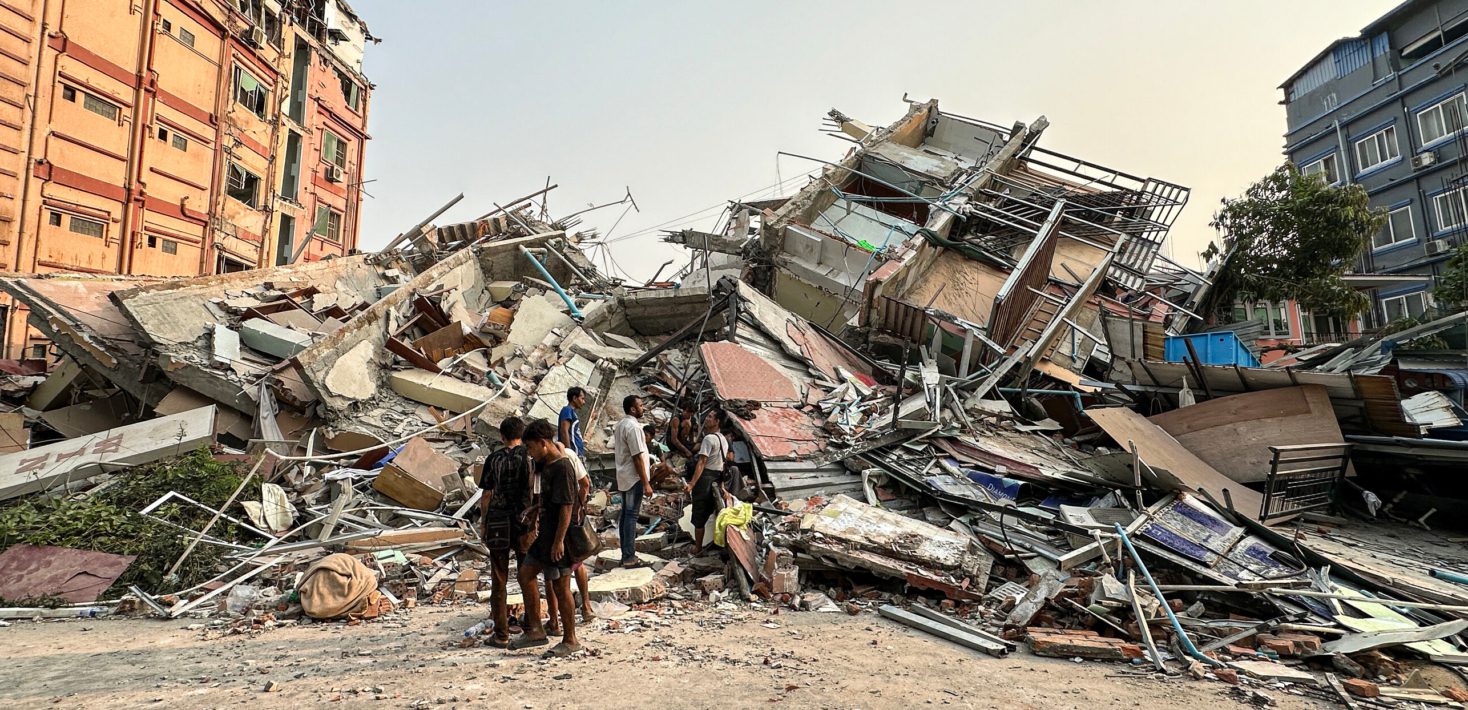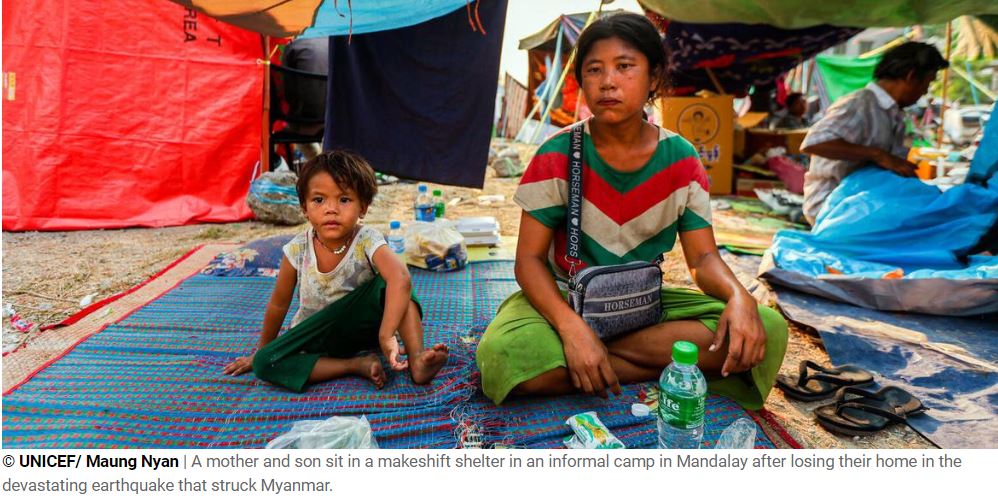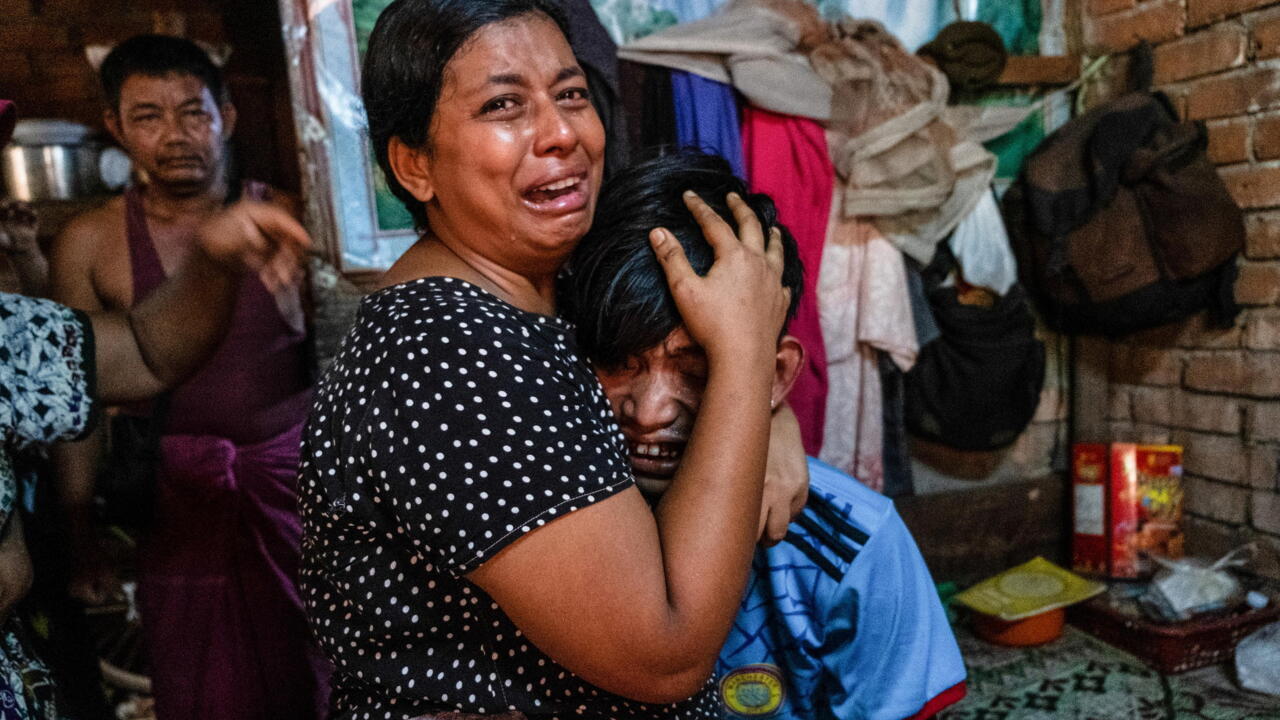25.04.2025
Myanmar: Thousands Remain In Crisis Weeks After Deadly Earthquakes
Thousands of families in Myanmar remain without shelter, water or medical care three weeks after deadly earthquakes struck the country, as frequent aftershocks compound the suffering of communities already battered by conflict and poverty. More than 4.3 million people urgently need clean water and sanitation, as the earthquakes severely damaged water systems, collapsed over 42,000 latrines and caused widespread power outages that have halted water pumping in many areas. Damage to water systems has forced residents to rely on unsafe sources, heightening the risk of waterborne illnesses. Malnutrition is also a growing concern – particularly among children – as food insecurity worsens and nutrition support becomes harder to deliver. Education infrastructure has also been hard hit. With the new school year set to begin in June, thousands of damaged classrooms must be cleared, repaired or rebuilt, and clean water, toilets and basic hygiene facilities restored before students can safely return. Damage to farmland and supporting infrastructure now threatens food production just as the monsoon planting season approaches. Women and girls are exposed to a convergence of threats, with the crisis compounding long-standing vulnerabilities and disrupting access to vital protection and health services. According to the UN sexual and reproductive health agency, UNFPA, more than 10 million women and girls were already in urgent need of assistance before the quake. Now, displacement, overcrowded shelters and damaged health infrastructure have heightened risks of gender-based violence, while also limiting access to essential maternal and reproductive health services. More than 190 health facilities have been damaged and essential medicines are running out, impeding antenatal and postnatal care as well as access to emergency obstetric and neonatal services.
Credit: ALJAZEERA
Credit: ALJAZEERA
Poverty deprives people of adequate education, health care and of life's most basic necessities- safe living conditions (including clean air and clean drinking water) and an adequate food supply. The developed (industrialized) countries today account for roughly 20 percent of the world's population but control about 80 percent of the world's wealth.
Poverty and pollution seem to operate in a vicious cycle that, so far, has been hard to break. Even in the developed nations, the gap between the rich and the poor is evident in their respective social and environmental conditions.
Poverty and pollution seem to operate in a vicious cycle that, so far, has been hard to break. Even in the developed nations, the gap between the rich and the poor is evident in their respective social and environmental conditions.
















